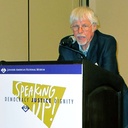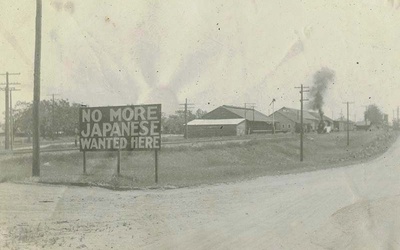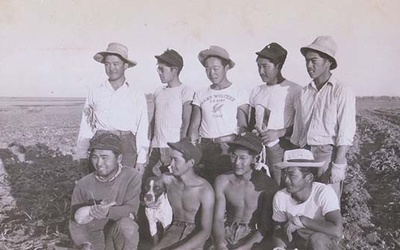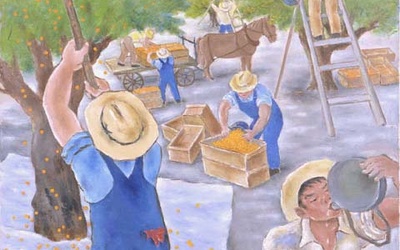
Arthur A. Hansen
@Art_HansenArt Hansen es profesor emérito de Historia y Estudios Asiático-Americanos en la Universidad Estatal de California en Fullerton, donde se jubiló en 2008 como director del Centro de Historia Oral y Pública. Entre 2001 y 2005, se desempeñó como historiador principal en el Museo Nacional Japonés Americano. Desde 2018, es autor o editor de cuatro libros que se centran en el tema de la resistencia de los japoneses estadounidenses a su injusta opresión por parte del gobierno estadounidense durante la Segunda Guerra Mundial.
Actualizado en agosto de 2023
Historias de Este Autor
Japanese Americans in the Interior West: A Regional Perspective on the Enduring Nikkei Historical Experience in Arizona, Colorado, New Mexico, Texas, and Utah (and Beyond): Part 5
13 de noviembre de 2009 • Arthur A. Hansen
>> Part 4 The Japanese Arizona World War II experience has been assayed by two historians, both working at Arizona universities: Charles Ynfante at Northern Arizona University and Andrew Russell at Arizona State University. Their work on this topic has in common the fact that both consider it within the context of Arizona’s overall home-front experience during World War II.1 Russell’s article in Arizona Goes to War: The Home Front and the Front Lines during World War II , …
Japanese Americans in the Interior West: A Regional Perspective on the Enduring Nikkei Historical Experience in Arizona, Colorado, New Mexico, Texas, and Utah (and Beyond): Part 4
6 de noviembre de 2009 • Arthur A. Hansen
>> Page 3 Unlike Armendariz, who chiefly builds her account of El Paso’s early Nikkei community from local newspaper articles, Miyasato relies heavily upon oral history interviews to construct her community narrative. Because these life stories provide a window through which to apprehend the special character of the Japanese El Pasoans and the complex ways they became embedded in the history, culture, and society of the Interior West region, they merit careful attention. The following representative sample focuses on Mansaku …
Japanese Americans in the Interior West: A Regional Perspective on the Enduring Nikkei Historical Experience in Arizona, Colorado, New Mexico, Texas, and Utah (and Beyond): Part 3
30 de octubre de 2009 • Arthur A. Hansen
>> Part 2 The two-pronged cause prompting the mass exodus of Issei railroad and mining gang laborers from Wyoming and Montana was their desire to pursue agricultural employment as well as the comparative paucity of opportunities to do so within these neighboring states. Wyoming suffered the most dismal agricultural scenario; subject to extremely cold temperatures and generally considered to be semi-arid, it was “climatologically inhospitable to farming.”1 According to Masakazu Iwata, while the great majority of Issei immigrants were …
Japanese Americans in the Interior West: A Regional Perspective on the Enduring Nikkei Historical Experience in Arizona, Colorado, New Mexico, Texas, and Utah (and Beyond): Part 2
23 de octubre de 2009 • Arthur A. Hansen
>> Part 1 The Nishizu family’s story of “relocation” and “resettlement” is only one among thousands of parallel versions involving other Japanese American mainlanders—truly a “people in motion”—during the World War II era. It is of particular value, however, because it spotlights and invites strategic exploration of a largely neglected aspect of Japanese American history, society, and culture: the prewar, wartime, and postwar circumstances of Nikkei communities within what historians Eric Walz and Andrew Russell have styled the Interior West …
Japanese Americans in the Interior West: A Regional Perspective on the Enduring Nikkei Historical Experience in Arizona, Colorado, New Mexico, Texas, and Utah (and Beyond): Part 1
16 de octubre de 2009 • Arthur A. Hansen
On February 19, 1942, President Franklin D. Roosevelt issued Executive Order 9066, which allowed U.S. military commanders to designate military areas as “exclusion zones” from which “any or all persons may be excluded.” This action came two and a half months after Japan’s December 7, 1941, attack upon Pearl Harbor—the U.S. naval station in the Territory of Hawaii then home to the main part of the American fleet—which precipitated the United States’s entry into World War II. Although it did …







